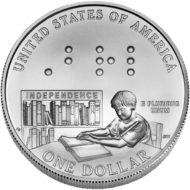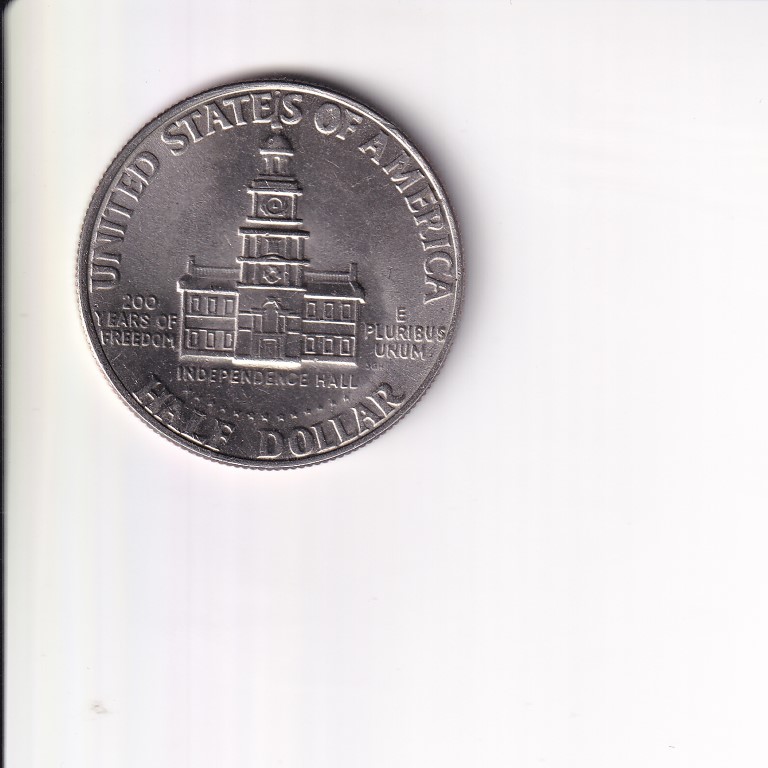Before answering this question, I need to clear a couple of things here. I love independence. It really bothers me when I need to depend on other people for no reason. There is a time and place when you ask for help, we all do. But being blind, I feel that sometimes I need to ask for more help than others. Now, why did I pick a hobby that one would associate with being able to see, or if you can’t see, it requires help.
I’m the first one to admit, there is a stage in recognizing the coin when vision is required. Once you learn to recognize a particular coin by touch, the next identical one is easy to tell. However, writing is so small even on large coins that you cannot spell it with your finger. I need somebody to give me enough information about a coin to get me started.
Generally, I try to ask other coin collectors. This way I am not asking for a favor. Instead, I go through somebody’s swap list, pick out some coins and trade them with mine. This way, there is a person at the other end of the deal who can see the coins, I know what I’m getting, and I’m reciprocating it with other coins which they don’t have.
Now the question is, how do I know which is which when I trade a handful of coins. There are ways around it. First of all, when you exchange coins, you know what you are getting. From here on, it is easy to look up the information in a catalog, get the size, shape and other characteristics of a coin. When I trade coins with others, I try to make sure that I don’t trade too many, and relatively different ones. Thus, I know exactly which one is supposed to be the larger or smaller, the smooth edge one or the reeded. This can help me identify most of the coins I’m getting. On some coins, you can even feel the numbers which is helpful too. When they are similar in size, I can always measure the diameter and check the catalogue, knowing which ones I have traded.
I never make a secret of being blind when I trade coins. More about this later, but it is only fair to other collectors to know this information. Regularly I don’t have valuable coins, but they need to go into a coin exchanges knowing that I have no idea about the quality of the coin I’m sending. Or if they want to know it in advance, I cannot just tell them, I need to scan a picture and email it to them so they exactly know what they are getting. I never had a problem with sending lower than expected quality coins, but I just feel better being fair. Of course, you can tell by touch right away if a coin is too dirty or worn or if it has any defects.
So, the reason why this is important is because there are people that I trade with over the years. Once we get to know each other, I tend to ask them to put the coins in a particular order. This also helps me to know which is which. All I need now is a country, a date and a KM number and I don’t need to see for the rest of it. I can get more information from the catalog, and then the research can begin.
You may ask what if I mix up the coins, or I assume wrong information. Oh well, be it. I guess I will never know. I will just believe for the rest of my life that something is a one Peseta, enter the information about it into my catalog, and will never find out that it isn’t. Yes, it is part of the deal. It could happen, and maybe it did. However, I try to be very meticulous identifying a given coin, and try to get enough information about it before I enter it into the catalogue. For that matter, it happened several times that there was a coin which I was certain what it was, but the data in the catalogue didn’t match with the actual coin type and measurements, so I just had to ask somebody to read the information from the coin to me. Or another relatively usual story is that I swipe a couple of coins off the table accidentally, or dump a newly received envelop. All identification techniques fail there, I have to start from scratch.
Once a coin is identified, it is lot’s of fun to try to be able to recognize it just by touch.
Some can feel very identical, and also, after a while it is just hard to memorize so many coins. But a coin can have so many parameters. First of all, they feel unique. Just the first impression, without even going into details. Then a coin has a size. After you know a number of coins, you can always compare them to each other. Some are very tiny, some are just small, others are larger than most of the other ones. The thickness is also very different. Some old coins are almost as thin as paper, others can be more than 2 MM thick. The combination of these two parameters can make a good number of recognizable types.
Then there are coins which have large numbers. I recognize printed numbers, so this can also help me. It is easy to read the numbers on the current Hungarian coins for example. In case of the US coins, I have to look for something else. Ok, this may not be a fair comparison, because I use these coins on a daily basis, so it is hard to get them wrong.
On other coins you can clearly feel a head, a person, a unique pattern of writing, some have quite a bit of writing, some are relatively smooth.
And there is the material of the coin. Aluminum coins are much lighter, I use a magnet to tell which are the iron coins. Similar feeling coins have different and distinct sounds when I drop them on the table.
When I was a kid, I grouped coins by country into different bags. Just by shaking the bag I was able to tell the country. It would be interesting to do again, but that would be the end of the cataloging system…
Then there is the edge and the shape. Some coins are reeded, others are smooth, some have a groove on the edge, some have writing. Most coins are round shaped, but there are some with 4, 6, 8, 12, etc sides. I even have a triangle shaped coin from the Cook Island, which is recent circulating currency. Some coins have a whole in the middle, and sometimes the whole is square shaped.
Even though the unusual shape coins are the minority of my collection, these parameters give me enough information to memorize which is which.
I think it would be possible to memorize the majority of my collection, I just don’t have the time. It is faster to learn a language.


I came across this blog via a friend at WOC. Its truly amazing to find some one who is able to manage a collection … would love to see more of your coins and list to understand your area of interest … and I guess you have an advantage over others in the sense, you would be able to spot the Die Variations much better than someone like me … I am so poor at it that even a lens doesn’t help and I just go by expert opinion hardly able to make out the difference.
Thank you for your comments. It is a promis, I will have more about the coins, and I will post some pictures. But let me have this excuse for the time being, it takes a little more planning for me than snap and post the picture. However, I’m working on the solution.
Although I knew about this site, Today I was searching for something on the web and your site came up on the second page. It is gaining some popularity on the search engine. Keep it up. I suggest you share more of your experience, create a some unique themes like the one you started on WOC [Braille coins] etc so more and more people will find and connect with you and your inputs would be very helpful.
That is great, thanks for letting me know.